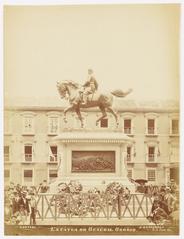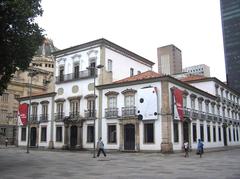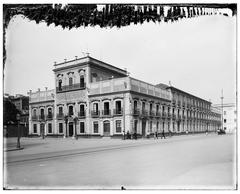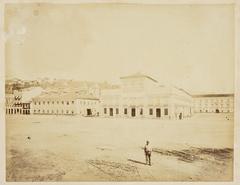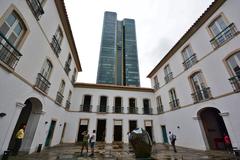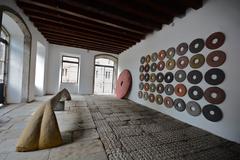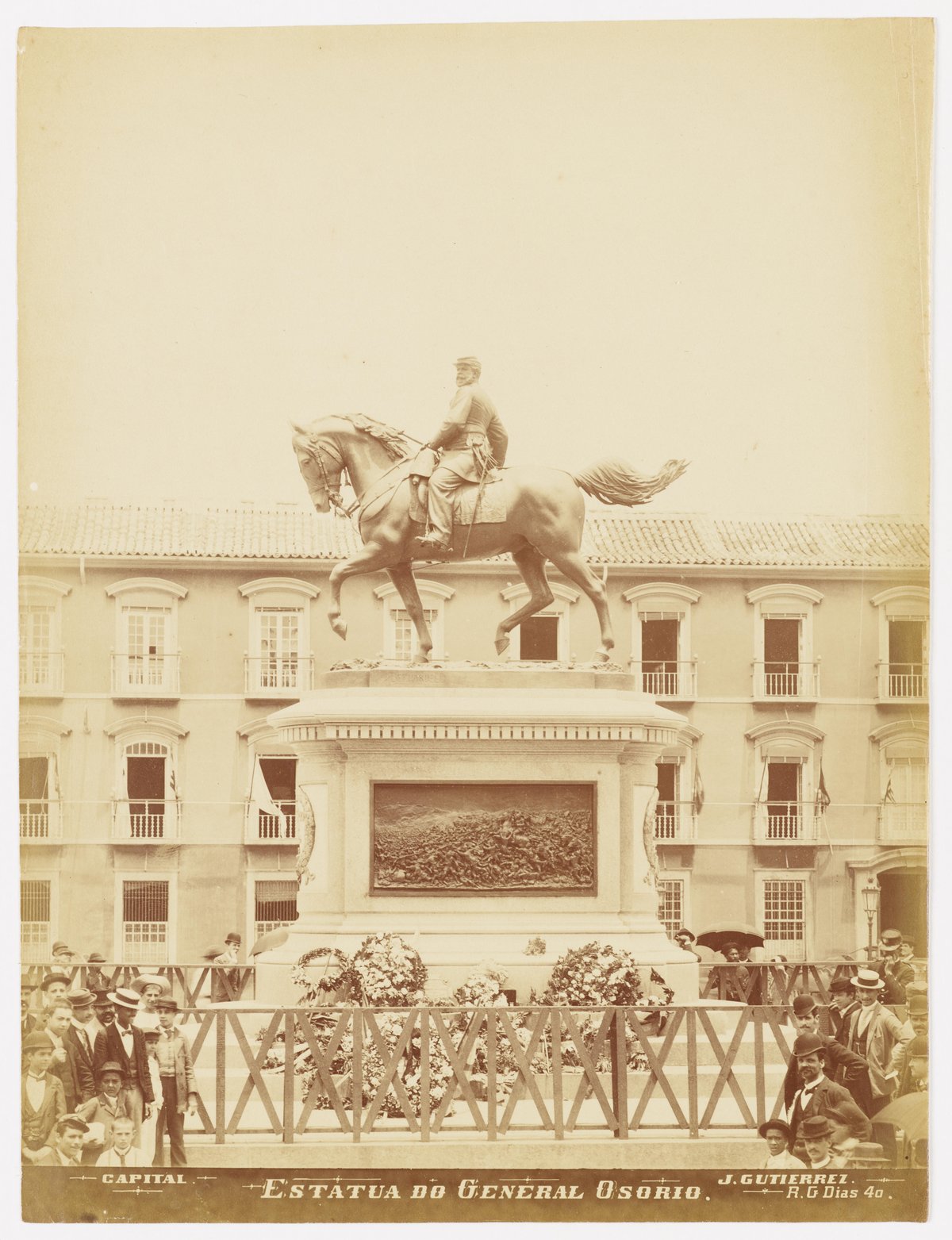
Paço Imperial Rio de Janeiro: Visiting Hours, Tickets, and Historical Sites Guide
Date: 14/06/2025
Introduction
Located at Praça XV de Novembro in the heart of Rio de Janeiro, the Paço Imperial stands as a remarkable testament to Brazil’s colonial and imperial history. Originally constructed between 1738 and 1743 as the Casa dos Governadores, the building has evolved into an emblem of political transformation and cultural continuity. Today, it serves as a vibrant cultural center, drawing visitors keen to immerse themselves in the architecture, art, and pivotal moments that shaped the nation. Whether you are a history enthusiast, architecture lover, or traveler seeking to explore Rio de Janeiro’s historical sites, this comprehensive guide will provide essential information on visiting hours, ticketing, accessibility, and highlights of the Paço Imperial. For further details, consult the official Paço Imperial website and the Rio de Janeiro tourism portal (Diário do Porto; Itaú Cultural; Lonely Planet).
Contents
- Introduction to Paço Imperial
- Historical Overview
- Colonial Foundations and Early Construction
- Transition to Vice-Regal and Royal Residence
- Imperial Era and National Milestones
- Architecture and Restoration
- Visiting Information
- Hours, Tickets, and Accessibility
- Getting There and Travel Tips
- Exhibitions, Events, and Amenities
- Nearby Attractions
- Frequently Asked Questions (FAQ)
- Conclusion and Visitor Recommendations
- Sources and Further Reading
Historical Overview
Colonial Foundations and Early Construction
The origins of the Paço Imperial trace back to the early 18th century, reflecting Rio’s ascent as a pivotal colonial hub. Commissioned by Governor Gomes Freire de Andrade and designed by José Fernandes Pinto Alpoim, the palace drew inspiration from Lisbon’s Paço da Ribeira (Diário do Porto; Itaú Cultural). Its completion in 1743 gave the city a landmark government residence that would become central to Brazil’s administrative life.
Transition to Vice-Regal and Royal Residence
When Rio de Janeiro became the colonial capital in 1763, the building was elevated to the Paço dos Vice-Reis (Rio Memórias). The most significant transformation occurred in 1808 with the arrival of the Portuguese royal family, fleeing the Napoleonic invasions. The palace was repurposed into the Paço Real (Royal Palace), becoming the seat of Prince Regent Dom João VI and the center of the Portuguese Empire in the Americas (Diário do Rio).
Imperial Era and National Milestones
With Brazil’s independence in 1822, the palace became the Paço Imperial, serving as the administrative hub for Emperors Dom Pedro I and Dom Pedro II (Diário do Porto). The building witnessed defining events in Brazilian history:
- Dia do Fico (1822): Dom Pedro I’s public declaration to remain in Brazil, a critical moment leading up to independence (Rio Memórias).
- Imperial Coronations: Hosted the coronations of both Dom Pedro I and Dom Pedro II.
- Lei Áurea (1888): Princess Isabel signed the law abolishing slavery in the palace, marking a monumental societal change (Diário do Rio).
Following the proclamation of the Republic in 1889, the palace transitioned to civic roles, notably serving as the Central Post and Telegraph Office (Itaú Cultural).
Architecture and Restoration
The Paço Imperial is an outstanding example of 18th-century colonial and neoclassical architecture. Its four symmetrical façades, central courtyard, and covered walkways (passadiços) reflect both the European influence and the adaptation to Brazilian urban life (Itaú Cultural).
Royal-era modifications introduced ceremonial spaces, a balcony for public addresses, and neoclassical embellishments. Declared a national heritage site in 1938, the building underwent a meticulous restoration in the 1980s, led by architect Glauco Campello, to recover its early 19th-century grandeur and reinforce its cultural significance (Rio Memórias).
Visiting Information
Hours, Tickets, and Accessibility
- Opening Hours: Tuesday to Sunday, 12:00 PM – 6:00 PM. Closed Mondays and certain public holidays (Imaginario de Janeiro; Riotur).
- Admission: Free. Some special exhibitions or events may require tickets—check the official website for updates.
- Accessibility: The ground floor is wheelchair accessible with ramps and elevators. Some upper-floor areas may have limited access due to the historic structure. Assistance is available upon request.
Getting There and Travel Tips
- Location: Praça XV de Novembro, 48, Centro, Rio de Janeiro (WhichMuseum).
- By Metro: Carioca Station (Lines 1 and 2) is a 10-minute walk.
- By Bus: Multiple lines serve Praça XV.
- By Taxi/Rideshare: Easily accessible throughout Rio.
- Travel Tips:
- Visit during weekdays or early afternoons for fewer crowds.
- Bring a translation app, as most signage is in Portuguese.
- Keep valuables secure and remain attentive in the downtown area (Reddit).
- Photography is permitted in most areas (flash/tripods may be restricted).
Exhibitions, Events, and Amenities
Exhibitions and Cultural Programming
Paço Imperial is renowned for its temporary art exhibitions spanning painting, photography, sculpture, cinema, and music (WhichMuseum). While it does not maintain a permanent collection, the rotating exhibitions by prominent Brazilian and international artists receive consistent praise (Itaú Cultural).
Special Events and Guided Tours
The palace hosts concerts, lectures, workshops, and international cultural exchanges, such as the “Iluminações Poéticas: Arte do Reino Saudita” exhibition (Diário do Rio). Guided tours are available in Portuguese, with some English-language tours by arrangement (S2Rio; Free Walker Tours). Advance booking is recommended for non-Portuguese speakers.
Amenities
- Dining: Bistrô do Paço offers light meals and drinks (Wanderlog), while the Harlequin Café combines a coffee shop with a book and music store (Imaginario de Janeiro).
- Shops: Bookstore and music shop with Brazilian art, history books, and local music (WhichMuseum).
- Library: Paulo Santos Library specializes in art and architecture, with rare books from the 16th–18th centuries (Wikipedia).
- Restrooms, Seating, and Wi-Fi: Available on-site; Wi-Fi is limited.
Nearby Attractions
The central location of Paço Imperial makes it an excellent starting point for exploring nearby Rio de Janeiro historical sites:
- Convento do Carmo: Adjacent, with rich colonial history.
- Museu Histórico Nacional: Extensive exhibitions on Brazilian history.
- Royal Portuguese Reading Room: Renowned for its stunning architecture and collection.
- Museum of Tomorrow: A modern science museum at Pier Mauá.
- Praça XV and Arco de Teles: Vibrant square and historic archway (WhichMuseum).
Frequently Asked Questions (FAQ)
Q: What are the Paço Imperial visiting hours?
A: Tuesday to Sunday, 12:00 PM to 6:00 PM. Closed Mondays and public holidays.
Q: Is there an admission fee?
A: No—admission is free. Some special exhibitions may require tickets.
Q: Are guided tours available?
A: Yes, primarily in Portuguese; English tours available by arrangement.
Q: Is the building accessible for people with disabilities?
A: The main entrance and ground floor are accessible; some upper areas may be limited.
Q: Can I take photos inside?
A: Photography is allowed in most areas, but flash and tripods may be restricted.
Q: What else can I visit nearby?
A: Convento do Carmo, Museu Histórico Nacional, Royal Portuguese Reading Room, Museum of Tomorrow, Praça XV, and Arco de Teles.
Visuals and Media Recommendations
- Exterior view of the Paço Imperial façade with descriptive alt text: “Paço Imperial façade at Praça XV, Rio de Janeiro.”
- Interior shots of the Throne Room and exhibition halls.
- Photos of the tranquil central courtyard and nearby attractions.
- Images should include keywords such as “Paço Imperial visiting hours” and “Rio de Janeiro historical sites.”
Conclusion and Visitor Recommendations
The Paço Imperial is a living monument that bridges Brazil’s colonial origins, imperial grandeur, and modern cultural dynamism. Its architecture, history, and vibrant programming make it one of Rio de Janeiro’s premier historical sites. With free admission, accessible amenities, and proximity to other landmarks, it offers a rewarding experience for all visitors. Take advantage of guided tours, on-site dining, and the central courtyard for a memorable visit. For the latest updates, check the official website and consider downloading the Audiala app for audio tours and insider tips.
Call to Action
Plan your visit to the Paço Imperial and immerse yourself in Brazil’s history and culture. Download the Audiala app for guided tours, exhibition updates, and travel tips. Follow us on social media for daily inspiration about Rio de Janeiro’s historical sites.
